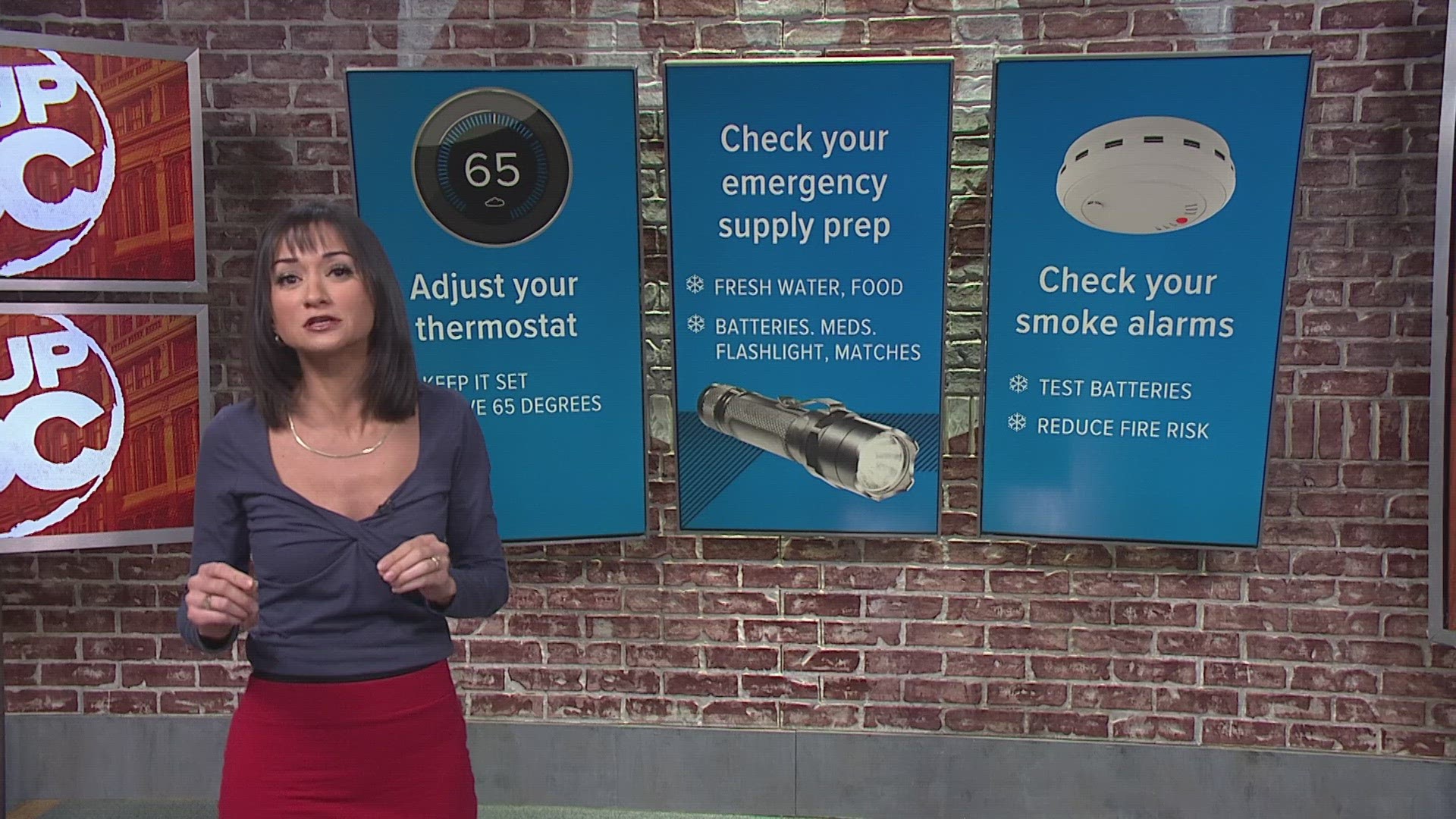WASHINGTON — If you've been putting off winterizing your home, here is your reminder to do so before it gets too cold. And with drastic temperature drops in the forecast, now is the best time to get your house ready for winter.
Save on heating costs as well as prevent potential damage to your furnace, plumbing and roof by taking these 10 steps to protect your home.
Check your furnace/heating system
Call your HVAC professional and schedule a time for them to come out for a tune-up. Doing this annually helps keep your furnace running efficiently.
You may even be able to do this yourself at home. Check out top tips for maintaining your furnace below.
Check your gutters
Icicles may by pretty, but roof damage is not. Prevent ice dams by cleaning out your gutters, consider installing gutter guards and make sure your attic floor is properly insulated.
Protect your pipes
Stop your pipes from freezing over by insulating those that could be susceptible to the extreme cold. When temperatures drop below 32 degrees Fahrenheit, keep a stream of water running in a few faucets to prevent freezing and bursting.
Consider opening the cabinet doors in your kitchen and bathrooms, so that warm air can surround the pipes, to protect the plumbing underneath
Put up garden hoses
Remove all garden hoses that are attached to the house, drain them and store them. Shut off the valves and insulate the faucet.
Keep the warm air inside
Apply caulking to holes and openings around windows, doors and air conditioners to help prevent cold air from seeping in.
Weather stripping can also be installed for additional heat loss prevention.
Test out your smoke detectors
Experts say house fires are more common in winter, so it is important to make sure your smoke detectors are working. These detectors should be checked monthly and batteries should be replaced as needed.
Homeowners should also consider installing a carbon monoxide detector.
Clear out the yard
Make sure trees stay trimmed and remove dead branches and debris from your yard. Winter weather events including ice, snow and wind can damage trees and cause branches to fall, potentially damaging your home, car or even yourself and others.
Adjust your thermostat
Set your thermostat to at least 65 degrees Fahrenheit. Make sure the inside of your home doesn't get too cold as temperatures outside drop to below freezing.
The cost of your heating and cooling bills often plays a part in the temperature you choose to stick with in winter and summer.
Prepare for emergencies
Make sure to have a home emergency kit ready to go, with enough supplies to last three days for each member of your household.
Water, non-perishable food, flashlight, candles, batteries matches, blankets, prescriptions and over-the-counter medications should be included.
Don't forget the needs of your pet at this time! Bring them inside as temperatures drop.
Keep driveway/sidewalks clear
Get your salt ready and prepare for winter weather by sprinkling it on steps, sidewalks and your driveway ahead of any storms. Be sure to read the directions for proper use and protective gear.

